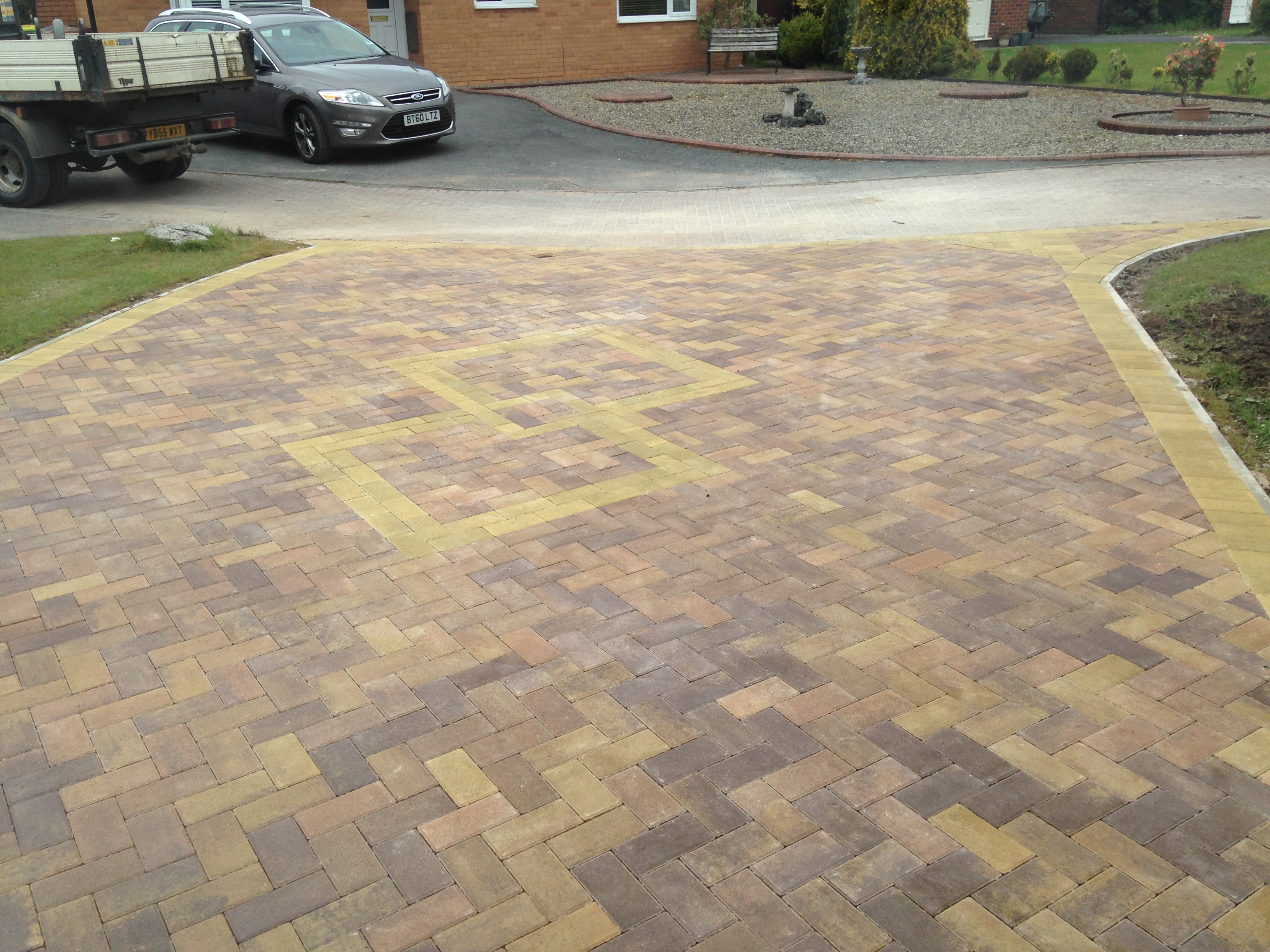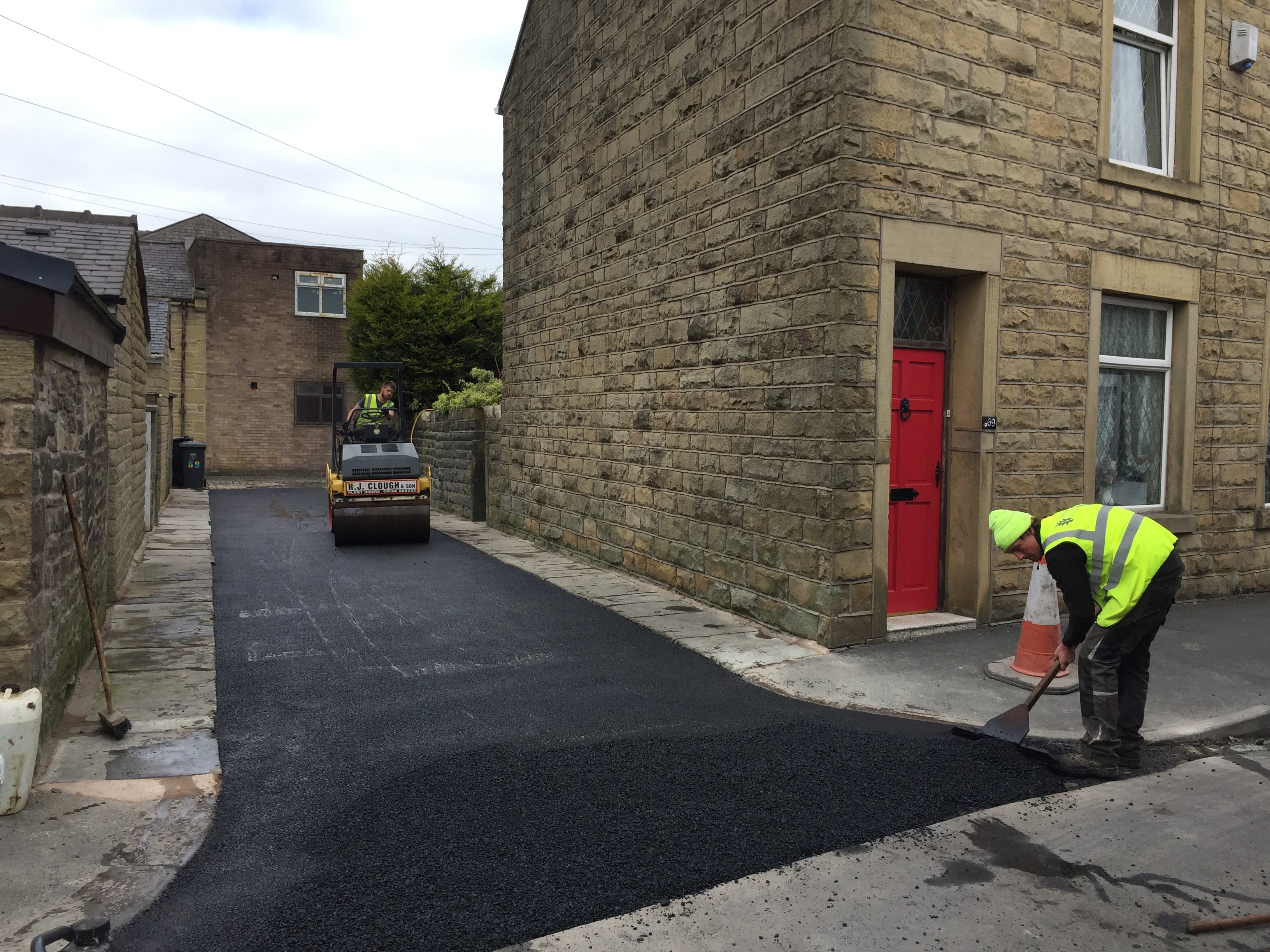
Why use machine lay
Asphalt machine pavers are generally used to distribute larger quantities of tarmac to larger areas where space is accessible, such as car parks, farm lanes and highways. Machine pavers perform better when the subsurface or foundation is level, creating a precise level surface finish with depths and falls being consistent throughout. A machine paver will lay tarmac up to widths of 4 meters and travel along lengths as required. A driver and screw men are required to operate the machinery with labourers and groundsmen needed to fill in sections not accessible for the paver.
Types of asphalt used for surfacing
There are three main types of surfacing products AC 6, AC 10 and AC 14. These products are generally used as standard specification requirements. For heavier use and when specified, products such as SMA (Stone, Mastic, Asphalt) or Hot roll are used.
AC 6
Mostly used for footpaths and lightly trafficked areas such as driveways and courtyards.
AC 10
Commonly used on rural roads, car parks and driveways, which are considered lower stressed areas. Blackoak Surfacing can evaluate and assess your requirements.
AC 14
Mainly used for the heavier trafficked areas and areas that can be hit hard by the elements. For example, arm lanes and motorways.
SMA and Hot roll products
SMA and Hot roll products are used in higher stressed areas such as car parks or on road bends – generally in areas where turning is apparent.
General information
When overlaying a surface course onto older existing foundations, such as concrete or asphalt, tack emulsion is essential to help the new surface bind or stick to the existing foundation. Surfaces should be rolled with a vibe roller in all directions to create the best possible finish.


Why use hand lay
Hand lay is used for smaller projects such as footpaths, driveways and courtyards or for projects that cannot be accessed by a paver. The tarmac is usually distributed by wheelbarrows, to an appropriate location on site and is levelled out by using a rake. The person with the task to level out should make points around the project to work to or use objects i.e. kerbing lines. This will help create correct falls and levels. Measurements of the depths of asphalt are checked throughout the works to ensure required depths are being met and the asphalt is being laid consistently.
Types of asphalt used for surfacing
There are three main types of surfacing products AC 6, AC 10 and AC 14. These products are generally used as standard specification requirements. For heavier use and when specified, products such as SMA (Stone, Mastic, Asphalt) or Hot roll are used.
AC 6
Mostly used for footpaths and lightly trafficked areas such as driveways and courtyards.
AC 10
Commonly used on rural roads, car parks and driveways, which are considered lower stressed areas. Blackoak Surfacing can evaluate and assess your requirements.
AC 14
Mainly used for the heavier trafficked areas and areas that can be hit hard by the elements. For example, arm lanes and motorways.
SMA and Hot roll products
SMA and Hot roll products are used in higher stressed areas such as car parks or on road bends – generally in areas where turning is apparent.
General information
When overlaying a surface course onto older existing foundations, such as concrete or asphalt, tack emulsion is essential to help the new surface bind or stick to the existing foundation.
Surfaces should be rolled with a vibe roller in all directions to create the best possible finish.


